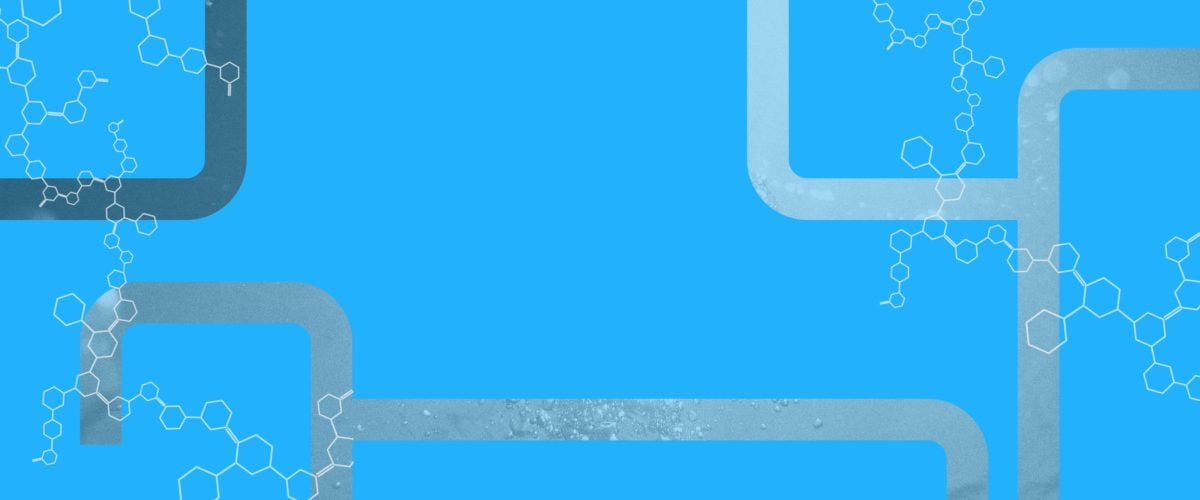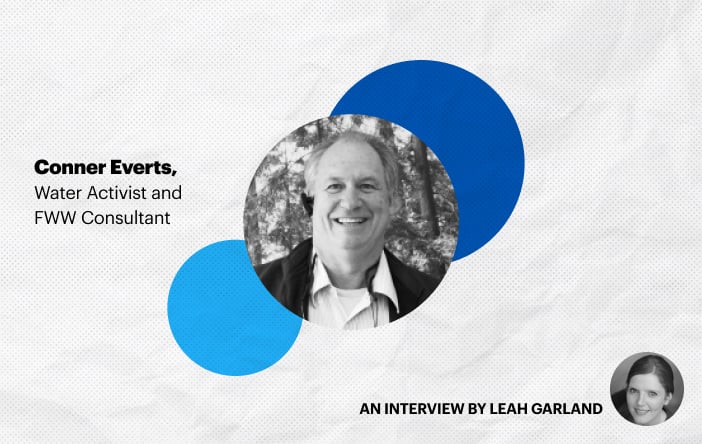On Desalination And Drought With Activist Conner Everts
Published Aug 29, 2022

After a recent victory against desalination in California, our water consultant explains the road we must take to sustainable, equitable water.
This May, a coalition of water advocates won a victory against the Poseidon desalination plant planned for Huntington Beach, California. As part of the 22-year effort, Food & Water Watch helped to shut down plans for the plant. If it had been approved, Poseidon would have wreaked havoc on marine life and driven up community water rates. At the same time, the plant would have bypassed more cost-effective, more sustainable and more just conservation solutions.
Our Manger of Individual Philanthropy Leah Garland sat down with Conner Everts, long-time water activist and consultant. They discuss the Poseidon fight, the dangers of desalination and the future of water in California. This interview was edited for clarity and length.

Laying The Groundwork Against Desalination
You have been Food and Water Watch’s Water Consultant since we were founded in 2005. How did you become a water consultant?
I think of myself more as an elder advisor on water because I’ve been doing it for so long. And I come from it the old-fashioned way. I was a fisherman, and so I loved rivers, and I could see the impact of what was happening. So I decided to focus on water back in the ‘80s.
When Wenonah Hauter started Food & Water Watch, I began consulting with them. The two issues I focused on were Cadiz, a desert-mining water project in the Mojave, and desalination, not just with Poseidon but with all the plants up and down the coast.
We hear a lot about how desalination is good for other places, like Israel, to provide clean water in dry areas. So why is desalination not good for California?
In California, it’s a case of “technological fix.” The water industry and cities are asking, “How can we maintain our level of water waste and our lifestyle without changing it?”
But before Israel, Spain or Australia did desalination, they got their per capita water use down to 40 gallons a day. In California, we’re at about 80-90 gallons in residential areas. Instead of conservation, much of the state’s basic water management policy is to pray for rain at this point.
We over-allocate the amount of water we have at least five times. And that was before climate change. Water is a finite resource. Until we treat it like that, we’re not dealing with reality.
A Hard-Won Victory Against Desalination in Huntington Beach
How did the campaign find success in its most recent battle with Poseidon?
When Poseidon started in Huntington Beach, they found a lot of political resistance. So they went to San Diego and managed to get the Carlsbad plant through, in the midst of fires and a dry time.
But that plant has provided less water than they would have by reducing their demand, at a far greater cost. And Poseidon got a take or pay deal, meaning that whether people need the water or not, they’re going to pay for it. And that made it good for Poseidon, but not the ratepayers whose water rates went up and up.
So when Poseidon came back to Huntington Beach, opposition against them had grown. We had all the resources we needed from tribal and environmental justice groups, and a UCLA report calling for a human right to water — affordable, safe and clean water for all.
I think that was a key issue: Can a private company essentially industrialize the ocean and make a profit off of it, while ignoring the public trust?
Poseidon said they weren’t going to take any public money, but they went for money that should have been going to affordable housing through state agencies. We found we were part of a much more complicated financing issue, where corporations take money that’s available — that should be used for pollution control and affordable housing — and they try to apply it to a private project. We gave them a lot of heat for that.
The fight ended with a unanimous decision against the plant, from the now majority-women Coastal Commission with tribes and environmental justice organizations leading the way.
What has Food & Water Watch’s role been in the movement against desalination?
For a long time, Food & Water Watch was the only one fighting desalination work. And they don’t mind going after the Governor, or making the connection between energy and water. Some groups are more siloed, but Food & Water Watch wasn’t.
The model we used was working with local groups, helping them build up their own capacity. We were able to mobilize people and bring them together. Food & Water Watch had a big voice there. It wasn’t an “It takes a village” moment, but rather “it takes a large regional metropolis” to find solutions because water should be a regional issue.
It shouldn’t be dictated by state policy or water agencies. It shouldn’t be dictated by engineering firms or private speculators like Poseidon. It should be dictated by all the people impacted.
Continuing The Fight For A Better Water System
What does California need to do to protect its water considering our water situation right now and the worsening effects of climate change?
We’re faced with these, what I call, “zombie boondoggle water supply” options. They’re these pipe-dream fantasies of how we’re going to provide water. Yet we know we can do more with less water if we use it efficiently.
But if you really want to have equity in water, those who use the least should pay the least. That would support the human right to water.
Also, desalination plants need power, and if you’re running a power plant on the coast 24 hours a day, that impacts the air quality of the people living inland. But desalination benefits coastal development, like beachfront roads and hotels. Expanding that is going to raise water rates. And that’s going to impact people who can’t afford water, who live in hotter inland areas.
At the same time, are we going to allow the extinction of salmon, steelhead and sturgeon? Those fish are the bottom of the food chain, and those are dying off. That impacts fish, seals, orcas and the salmon runs. And that impacts Indigenous communities, who are dependent on the salmon runs in their culture, not to mention for their food.
If you get into the details of water, it’s not as simple as “Well, just build a desal plant.” But it can be simple if we continue to reduce our demand and acknowledge the people who need it most. We can reduce our use. We can break the cycle of repeating these issues over and over again.
We’ll Break The Cycle With Your Help
The battle against desalination is far from over. In August 2022, Governor Gavin Newsom announced a new water plan that includes measures to grow and fast-track desalination in California.
In the months ahead, the state faces additional desalination proposals in Orange County and Monterey. Meanwhile, Newsom has pushed to reopen the Diablo Canyon nuclear power plant with desalination infrastructure.
California doesn’t need desalination. It needs water conservation, a fast transition off fossil fuels and a system that guarantees safe, clean and affordable water for all. We have the power to push for the sustainable and equitable future of water we deserve.
Everyone must know: California deserves better than desalination!
Enjoyed this article?
Sign up for updates.
TO TOP


